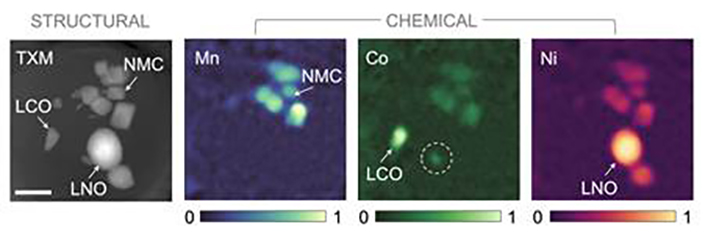Professor Jizhou Li leads breakthrough in nanoscale X-ray chemical imaging published in prestigious journal PNAS

We congratulate Professor Jizhou LI, Assistant Professor of the School of Data Science, for recently having his research paper “Nanoscale chemical imaging with structured X-ray illumination” published in the Proceedings of the National Academy of Sciences (PNAS). With an interdisciplinary research team, Professor LI presents an advanced X-ray imaging technique, based on structured illumination and generative artificial intelligence, to achieve high compositional and chemical sensitivity. This new single-pixel imaging approach is a direct result of integrating data science principles with X-ray microscopy, showcasing the profound impact of computational techniques on traditional scientific imaging methods.
In contrast to the common practice of creating a uniform X-ray illumination, the authors purposely distort the illumination patterns and use them to encode the specimens’ structural and chemical information, which is later reconstructed by exploiting the pseudorandomness of illumination patterns. As a demonstration, the authors imaged a composite battery cathode sample, which are highly relevant to the batteries used in today’s consumer electronics and electrical vehicles (Fig. 1). The ability to map elemental distributions at the nanoscale, augmenting the imaged structure from transmission X-ray microscopy (TXM), is set to open vast scientific and engineering opportunities in various fields – from pinpointing metallic impurities in semiconductor wafers to analyzing electrode materials in batteries.

Fig.1. Structural and chemical composition maps of a composite battery cathode sample, delineating the distribution of LiCoO2 (LCO), LiNiO2 (LNO), and LiNixMnyCozO2 (NMC), as revealed by the advanced nanoscale X-ray chemical imaging technique developed by the research team.
"This technique showcases how imaging data science goes beyond extracting valuable information from data; it also reshapes the capabilities of data curation in terms of both resolution and sensitivity," states Professor LI. The collaborative work with diverse expertise reflects one of the School of Data Science's vision of transcending digital techniques and achieve real-world scientific breakthroughs.
PNAS is recognized globally as one of the most reputable multidisciplinary scientific journals, disseminating high-impact and innovative research across the biological, physical, and social sciences. Open to researchers around the world, PNAS is a key platform for sharing authoritative and pioneering scientific work. The success of this research is attributed to the significant contributions from partners at The University of Texas at Austin, SLAC National Accelerator Laboratory, Argonne National Laboratory, and The Chinese University of Hong Kong.
Please visit HERE to read the research paper published on November 28, 2023.